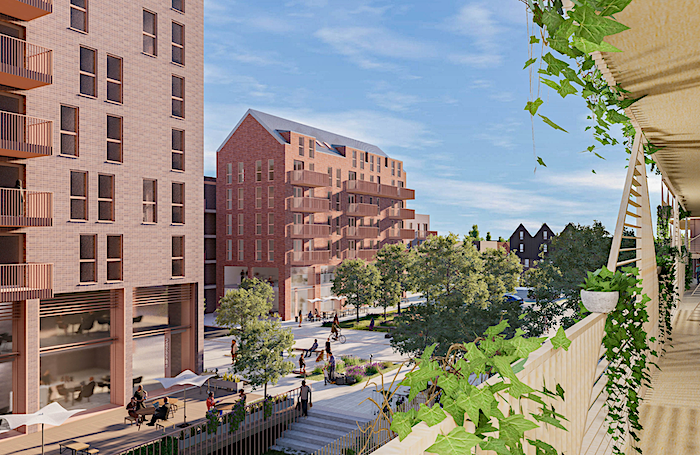Stolen Studio has never lost sight of the role design has to play in addressing the bigger societal challenges such as climate change, public health, and an aging population.
Their work reflects their diverse interests and passions. From researching new methodologies for integrating habitat into urban design and policy, to modelling an intricate design for new homes on a complex, constrained backlands site, or working to manage flood risk and improve placemaking on a major development.
Stolon Studio works closely with clients to understand the real human needs that sit at a project’s heart. They have designed and delivered a number of award-winning housing projects which exemplify their approach to ‘sociable architecture’; design which supports and enables community cohesion, and makes an uplifting contribution to the built environment.
Below, we speak to founders Jessica and Robert Barker about their work.
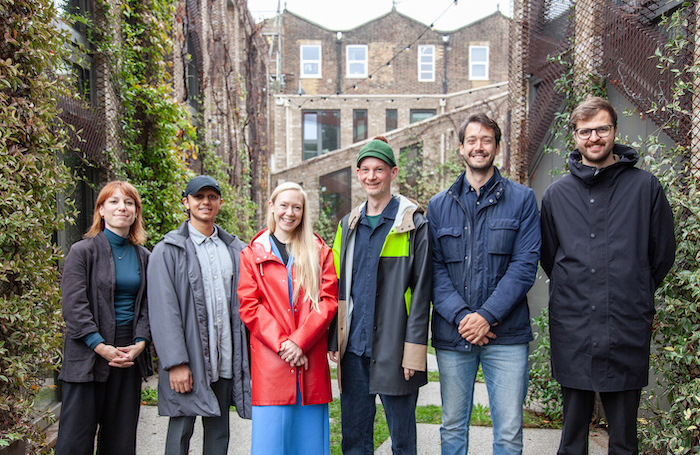
What do you think is the most important issue for architects to focus on right now, and what are you doing as a practice to tackle it?
There is no question that the most important issue facing the profession right now is how to respond to the climate crisis, but that means addressing many other critical issues including wellbeing, biodiversity, and social equality.
As a practice, we work with clients to design buildings that minimise the demand on resources. But, the key to that is the wider context for projects, and the way in which buildings and infrastructure can work together to tackle climatic, environmental, and societal challenges.
Increasingly, architects will need to focus on a more integrated approach with higher-density, collective design that supports wellbeing and resilience. We apply that approach across projects of all scales from four-home developments on urban infill sites, to bigger masterplans with hundreds of homes.
Designing in communal infrastructure from the outset has huge potential to address energy use, but it can be a hard sell to certain clients more used to a traditional approach, and can result in greater legal and management complexity.
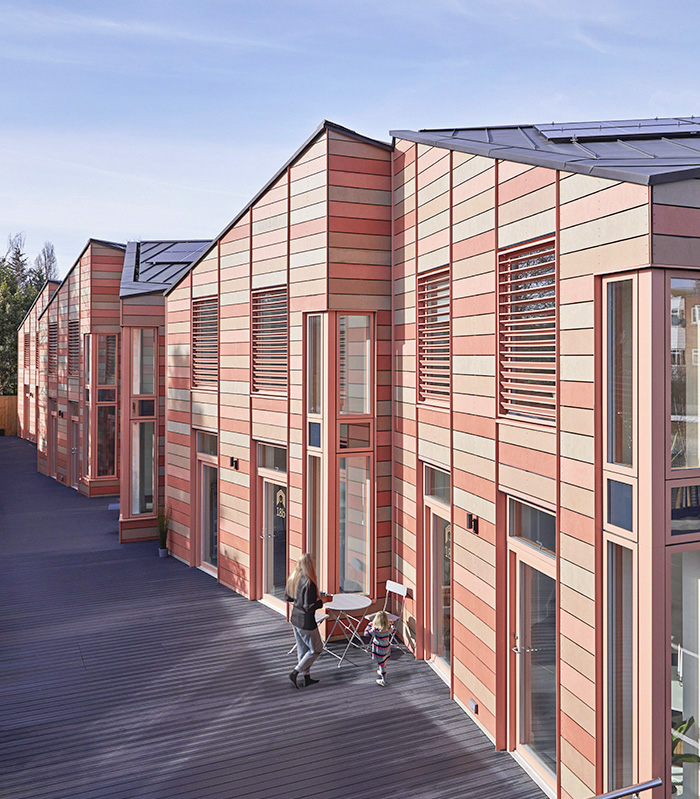
Are you part of the RIBA 2030 challenge? If so, how has your experience been so far?
Absolutely! The climate emergency demands urgent and collective action, and the RIBA 2030 challenge shows great leadership by setting target benchmarks for professionals. But it's important for us to continue to push the boundaries and benchmarks in aspiration and commitment.
At Stolon, we regularly work towards targets of 100% reduction in operational energy, and about 30% reduction in potable water. Even before the launch of RIBA 2030 back in 2019, we had begun to collate operational energy data from our completed projects, as part of in-house CPD, to check that these figures stand up over time and feedback into the performance expectations.
We see the embodied carbon (even in refurbishment) as an even bigger challenge, as this needs real scrutiny throughout the whole supply chain to avoid greenwash and double counting carbon savings, if it's to genuinely make a difference. We are currently working on a new approach to Modern Methods of Construction (MMC), which we believe will be transformational in terms of supply and demand and help overcome some of these issues. We are also working on a significant biodiversity research project and hope that those findings will feed into updated biodiversity targets in the next revision of RIBA 2030.
As a profession, we can always do more to lead the conversation, champion action, and help to bring building commissioners and users along with us.
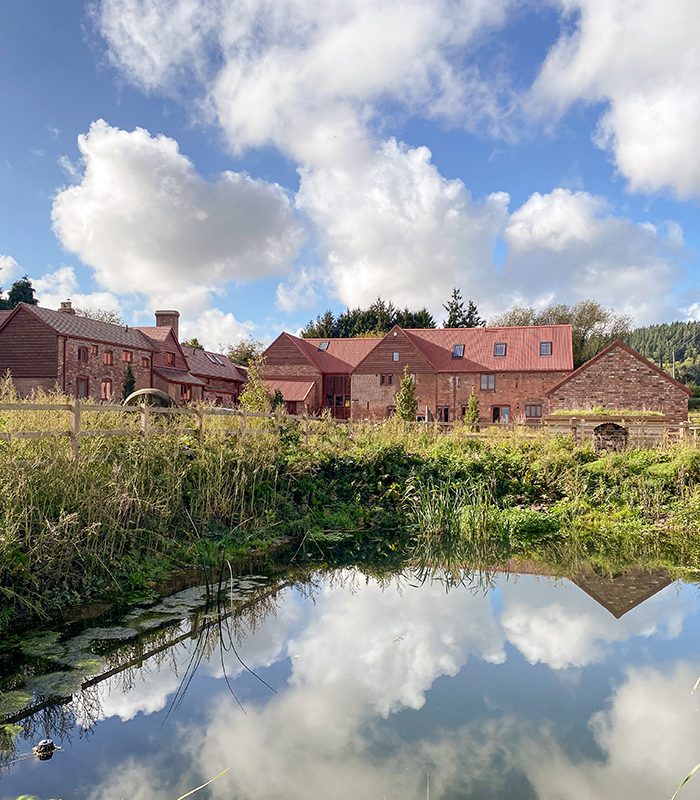
What’s the most exciting project you’ve got coming up and why?
We are currently working on BIURBS, a major two-year research project for UK Research and Innovation (UKRI) with the Universities of Manchester, West of England, and East London, to understand the value of biodiversity in urban areas.
While new Biodiversity Net Gain (BNG) policy seeks to improve the preservation of biodiversity overall, it is less effective in built-up areas. We have been experimenting on our house in Forest Mews to add space for biodiversity, and we think there must be plenty of other imaginative possibilities to add habitat in cities.
The research will help to demonstrate ways in which biodiversity can be integrated into urban planning in a way that delivers greater value, beyond just meeting minimum requirements. Thanks to research funding, it's wonderful to have the ‘mind space’ to help place habitat and biodiversity at the heart of design, and to build relationships between the architectural profession and a wider academic community. Collaboration and partnerships are critical to finding new solutions to new challenges.
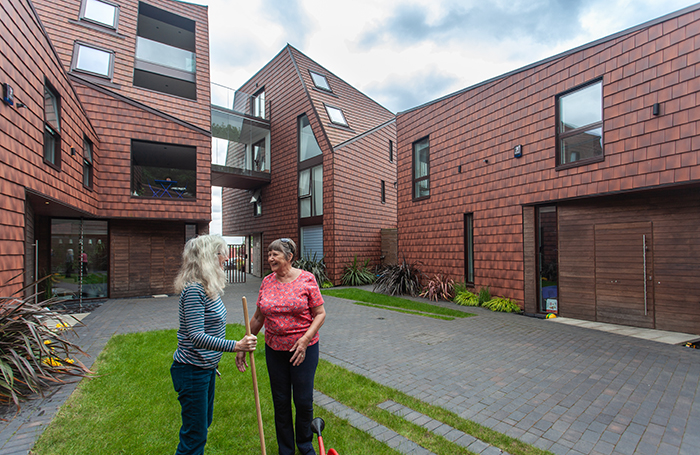
How do you incorporate environmental and social sustainability into your work? What do you think is the role of communities in a more sustainable architecture?
Many of our projects are rooted in ‘sociable architecture’; our design approach which supports and enables community cohesion.
We see the role of community as essential in tackling environmental and social sustainability. In projects large and small, such as Kaolin Court, Stables Yard, Wensum Edge, and The Parks, we have designed a shared, integrated infrastructure which helps address energy use, along with communal and social amenities to help create a sense of belonging and nurture a sense of community.
Whilst we facilitate community through both consultation and design, the real work happens after completion, once residents take ownership. We have seen some fantastic community initiatives taking shape in and enabled by our projects, including the creation of a library of valuable resources available to be shared or re-used; reducing consumerism and spreading the financial burden between households.
Land that is held and managed by the community gives residents agency over their environment and their future, significantly improving wellbeing. As a practice, we have the opportunity to live and work in our schemes to experience some of the communities residing in our projects. We have been able to see the direct impact of our designs – where it works and how it can be improved – and are always striving to create more value in what we do for clients, communities, employees, and the environment.
Are you optimistic about the future and where the profession is heading?
Yes! We are passionate believers in the collective power of people to make a difference.
As architects, we love to plan, but plans need to flex and adapt to suit changing needs and priorities, and as Lord Crisp said, “People coming together always trumps a plan.”
We look forward to a more collaborative future – as both citizens and as architects – and our collective power in meeting the current challenges with imagination, ambition, and pragmatism.
Traditionally, architects are pitted against each other, but now is the time for practices to work together, bringing a variety of expertise, skills, and knowledge. Thankfully, many clients are starting to recognise this.
Architects have always had the ability to zoom in and out; to see the bigger picture as well as the detail, and to visualise both the problem and the solution.
With rapidly evolving tools and technology, including AI, the role of the architect is bound to evolve, but our skills in coordination, community building, and curation mean we will still have a key role to play in driving change.
